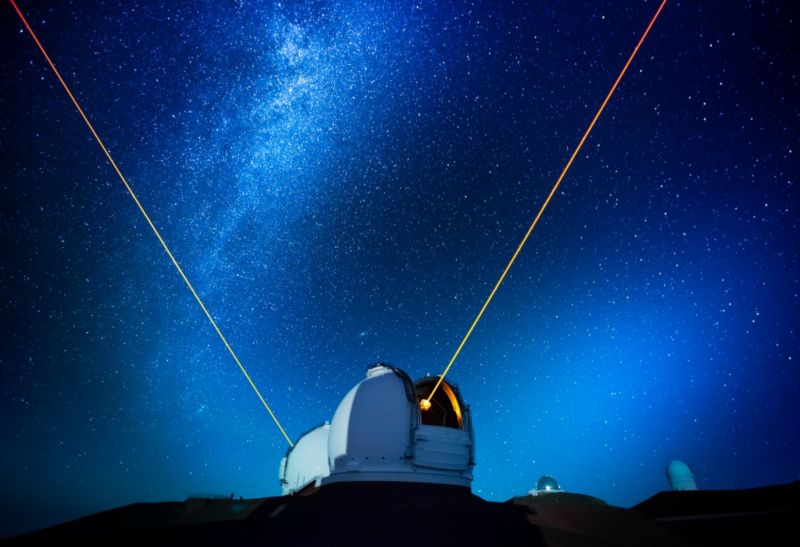

Making the world’s most accurate ruler smaller and more robust will bring us one step closer to finding habitable planets like our Earth.
If we want to discover an Earth-like planet around a star – especially a distant, faint one – we need to be able to see if a star ‘wobbles’ which indicates whether an Earth-like planet is orbiting around it.
However, identifying this wobble is extremely difficult, because it’s so slight and tiny. To detect it, we need an extremely precise way of observing the star, over at least a period of a few years (because Earth-like stars will take about one Earth year to travel around their Suns).
Current measuring techniques are not reliable enough to last several years without significant interruptions, jeopardising our chance of seeing the stars' tiny wobbles.
If we are also able to measure such tiny changes like the wobble of a star, we may also be able to measure whether our Universe is expanding – proving whether Einstein’s theory of relativity is correct. To do that, we need to be able to measure acceleration, and to do that, we need to compare two different speeds over time, one now, and one in 20 years.

To detect a star’s tiny wobble, we can use a piece of equipment that is mounted onto a telescope called a spectrometer. This tool gives us a way to receive information about the temperature, chemical composition and brightness of our stars – and presents this information as light spread across a rainbow colour spectrum. Elements have a specific ‘colour’ fingerprint, for example hydrogen absorbs a specific shade of red, while sodium has an identifiable orange line.
We use the spectrometer to show these fingerprints very clearly. If the star wobbles towards us then those fingerprints shift slightly towards the blue; if it wobbles away from us then they shift slightly towards red. This effect on the fingerprint is the tell-tale sign of an extra-solar planet.
However, this change from red to blue is extremely small and hard to identify. That tiny effect in the spectrum requires us to measure it very precisely, and to use a "colour ruler” as a point of reference that shows tiny shifts in the spectrum.
In 2012, two of our team members developed the first Australian light ruler as a standard reference against which the light from distant stars could be compared to search for the tiny wobbles.
The ruler is called an astrocomb. It’s reliable, precise and repeatable, and allows us to measure tiny changes in these wobbles over time.
The astrocomb contains tens of thousands standard reference signals, equally spaced in colour, just like the teeth of a comb, allowing us to determine the colour of any feature in a star's spectrum incredibly accurately. However, while astrocombs are excellent rulers for light and can help us to see the tiny wobble of a star, there are still a few technical challenges that remain.
Our team aims to create an astrocomb that can operate for 20 years without interruption, so we can measure stars wobbling over long periods of time, and even detect changes in the universe's speed of expansion. The tool also needs to withstand different environmental conditions, like pressure changes and temperature.
This means the tool needs to be able to be easily fixed by non-specialists and can have parts that are easily and cost-effectively replaced.
Our team are hoping to use integrated photonics to create astrocombs that are smaller, more stable, reliable and cost-effective, so we can detect the tiny wobble in distant stars.
The key step is for our team to demonstrate the work in the lab, then deploy them to the world's largest telescopes in Hawaii and Chile. There, the work will begin to detect Earth-like planets and to truly see the Universe's accelerating expansion in real time, as expected from Einstein's General Relativity.

Acknowledgement of Country
RMIT University acknowledges the people of the Woi wurrung and Boon wurrung language groups of the eastern Kulin Nation on whose unceded lands we conduct the business of the University. RMIT University respectfully acknowledges their Ancestors and Elders, past and present. RMIT also acknowledges the Traditional Custodians and their Ancestors of the lands and waters across Australia where we conduct our business - Artwork 'Sentient' by Hollie Johnson, Gunaikurnai and Monero Ngarigo.